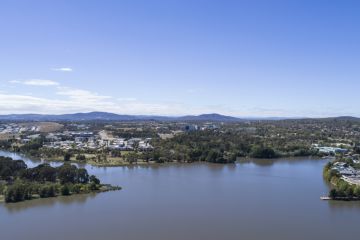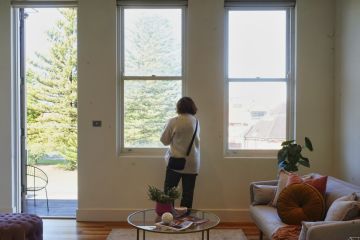Perth loses its housing market crown as peak growth passes
CoreLogic’s Home Value Index ended the year on a negative note, with values down -0.1 per cent nationally over the month after peaking in October and holding flat in November.
The West led the nation in home value growth surging 19.1 per cent higher over the year, followed by Adelaide (13.1 per cent) and Brisbane (11.2 per cent).
Three capitals recorded a decline in values over the year, Melbourne (-3 per cent), Hobart (-0.6 per cent) and the ACT (-0.4 per cent).
CoreLogic’s research director Tim Lawless said although the mid-sized capitals recorded double-digit annual growth in 2024, it was clear these markets have passed their peak rate of growth.
“The rolling annual change in Perth has eased from a cyclical peak of 24.7 per cent over the year ending July,” he said.
December also marked a change in the quarterly capital city rankings, with Adelaide overtaking Perth as the strongest market with values up 2.1 per cent in the December quarter, compared with a 1.9 per cent rise in Perth values.
“Extremely low advertised stock levels have continued to support strong growth conditions across Adelaide, with stock levels tracking – 34 per cent below the previous five-year average in mid-December,” he said.
“Perth, on the other hand, has seen a clear lift in advertised supply, which has provided buyers with more choice and less urgency, supporting a sharper slowdown in value growth relative to Adelaide.”
The local government areas with the highest 12-month growth in value were predominantly on Perth’s fringe in areas replete with affordable house and land packages.
Swan led the charge recording a lift of 24 per cent to take the median value of dwellings to $762,098.
It was followed by Mundaring (up 22.2 per cent to $843,726) and Kwinana (up 22.1 per cent to $658,950).
Strategic Property Group managing director Trent Fleskens said despite the lift in stock on market, which dropped by 800 properties over the Christmas break, Perth’s market was still strongly under supplied.
“Given there has been no change in our immigration numbers and no change in our ability to build houses any faster or cheaper, there’s no reason to suggest 2025 will be anything other than another strong year of property growth,” he said.
“The bottom line is, until we suddenly double our construction or halve our immigration, prices can only go up in a material way- not to mention what happens when interest states start falling.”
Canstar’s data insights director Sally Tindall said this year has been one of the toughest 12 months financially for millions of households battling rising rents or super-sized mortgage repayments, on top of ever-growing grocery bills and other essential expenses.
“While 2025 should bring some relief to borrowers in the form of RBA rate cuts, no one knows for certain when they will land, in fact, there’s no iron-clad guarantee we’ll see cuts next year at all,” she said.
“The government’s much-anticipated Help to Buy program, when it does finally get up and running, will provide lower income first home buyers with another potential path on to the property ladder.
“While it does nothing to put a lid on property prices, which is typically the biggest hurdle for first home buyers, it gives low and middle income Australians the ability to own at least part of their own home while limiting the amount of debt they take on.”
The Help to Buy scheme, passed in November, allowed eligible lower-income first home buyers to co-purchase a property with the government using a deposit of as little as 2 per cent, with 40,000 places over four years.
The program is still subject to some states passing their own legislation before it can start.
We recommend
States
Capital Cities
Capital Cities - Rentals
Popular Areas
Allhomes
More










